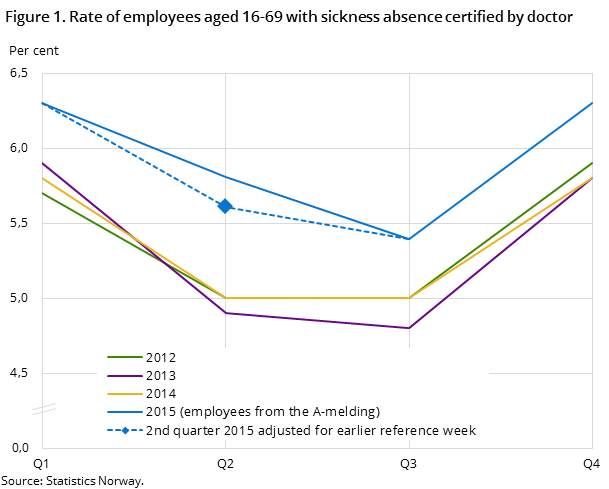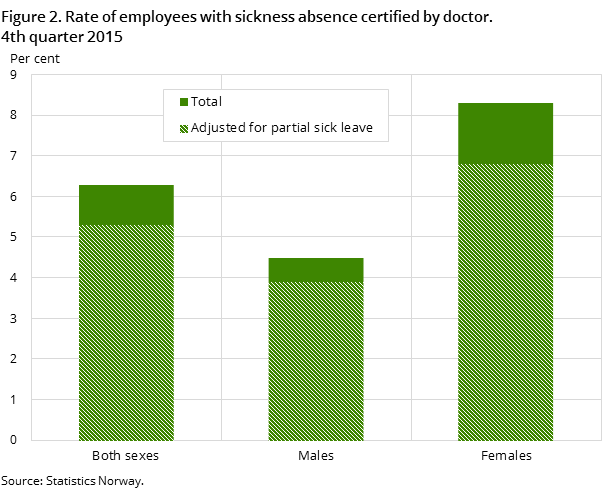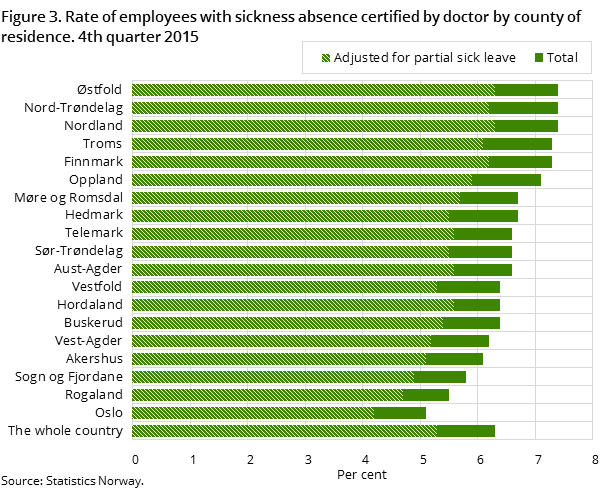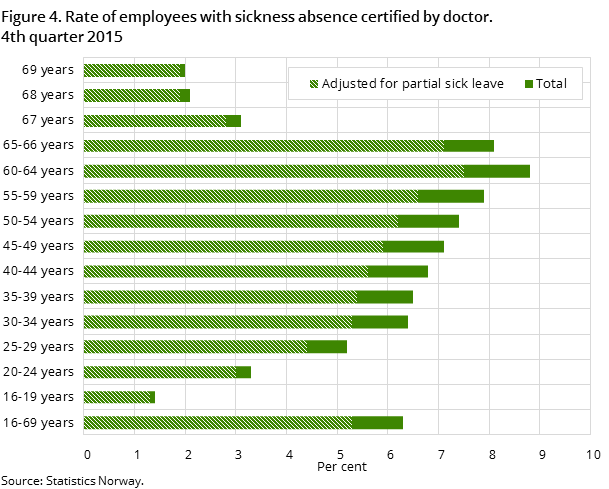Content
Published:
This is an archived release.
Small changes in sickness absence
The number of employees with doctor certified sickness absence as a percentage of all employees was 6.3 per cent both in the first and the fourth quarter of 2015.
| 4th quarter 2015 | |
|---|---|
| Both sexes | 6.3 |
| Males | 4.5 |
| Females | 8.3 |




A new data source from 2015 does not yet make it possible to publish the most commonly used figure for sickness absence, i.e. the sickness absence rate. Instead, we focus on the number of employees with sickness absence as a percentage of all employees.
It has been a goal for the central authorities to increase the use of partial sick leave. This means that fewer employees should be on 100 per cent sick leave, and instead be reported as partially sick. For example, partial sick leave of 80 per cent counts as 0.8 and not as one.
Women have a higher level of partial sick leave than men. This reduces the gender disparities. Adjusted for partial sick leave, the proportion is reduced from 8.3 to 6.8 per cent for women and from 4.5 to 3.9 per cent for men.
Possible break in the statistics in 1st quarter 2015Open and readClose
NAV’s Employers and employees register, which has been one of the main sources for the calculation of the sickness absence rate, was replaced by a new register in January 2015. The new register, the A-ordningen, which serves NAV, the tax authorities and Statistics Norway, is likely to give a different figure for employees than the Employers and employees register. This is due to both a somewhat broader coverage of the group and the fact that the quality is expected to be better. The number of employees and their hours of work determine the denominator in the sickness absence rates. The sickness absence for the 1st quarter of 2015 is scheduled to be published on 18 June.
Contact
-
Arbeidsmarked og lønn
E-mail: arbeidsmarked@ssb.no
-
Unn H. Høydahl
E-mail: unnh.hoydahl@ssb.no
tel.: (+47) 40 90 23 77
